Romagna Sangiovese DOC is the excellence of Sangiovese wines produced in the 16 sub-areas of Romagna; the production areas that bestow different shades to the wines, all of which to be savoured.

Serra

Brisighella

Modigliana

Marzeno

Oriolo

Castrocaro

Predappio

Meldola

Bertinoro

Cesena

Mercato Saraceno

Longiano

Imola

Coriano
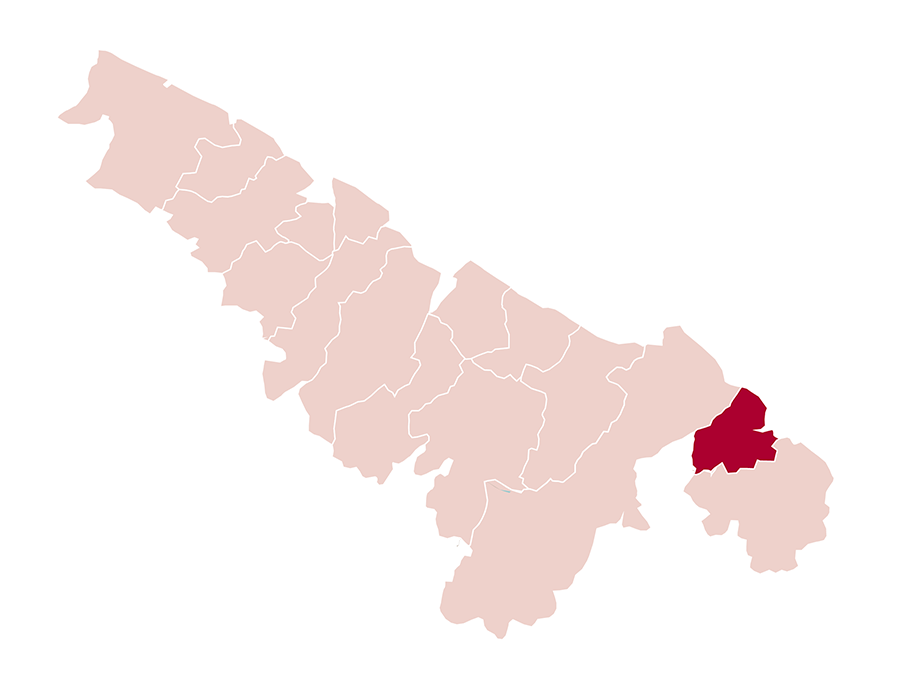
San Clemente

Verucchio

Serra

Serra has 4 different segments.
Starting from the north, the first has deep, fertile, clay-ferrous soils that give life to fruity and agile red wines. The second, just below to the south, is the beating heart of this area and is characterized by altitudes that range from 100 to 250 meters above sea level with clay-limestone soils that produce wines with excellent fruit liveliness, well proportioned warmth and volume, and a well-balanced tannic incisiveness.
The third, along the Senio Torrent, consents vine cultivation only in a few areas due to the presence of the badlands. The fourth is the enclave of the Vena del Gesso Romagnola Regional Park, a mystical landscape akin to lunar beauty, where viticulture is less significant.
Brisighella

With the exception of the town of Casola Valsenio and the Zattaglia hamlet, where the vineyards reach 450 meters above sea level, the productive heart of this sub-area is divided into 3 very different parts.
Starting in the north, the first has soils that range from clay-ferrous to limestone. Here, Sangiovese takes on significant spirit, robustness and warmth. The second part, which circles the municipality of the town of Brisighella, has marly-arenaceous soils and altitudes reaching 400 meters above sea level which guarantee that red wines have less muscle, less tannic pastiness and a greater richness of details. In the third part, closer to the slopes of the Apennines, viticulture is clustered along the marly-arenaceous terraces sheltered by the valley bottom of the Lamone River.
Here, the wines occasionally present a well balanced mineral fruit, a rather sharp tannic structure, and a sapid vein that dilutes its generous alcoholic aptitude. The Brisighella sub-area can be specified for the Bianco type (Trebbiano: minimum 60%; Albana and Chardonnay in purity or blend, up to a maximum of 40%).
Modigliana

Modigliana is a famous sub-area nourished by a terroir of value and characterized by an exclusively hilly viticulture whose altitudes reach 500 meters above sea level.
The territory possesses a predominance of sandstone sedimentary soils which are crossed by 3 streams and from which 3 different valleys open. The first, called Acerreta, has soils with a particular mix of sandstone and limestone marl which produces a Sangiovese wine that mixes tannic thickness with dynamism, fruit with minerality, all absolutely aged. The second valley, Tramazzo, is wider, more ventilated and has deeper soils, so its wines give room to fruit, freshness and elegance rather than complexity and warmth.
The third valley, Ibola, has thinner soils of pure sandstones with much more woods. There are less vineyards here and they produce wines that express a very personal aromatic charm (of spices and herbs) with a sapid/tannic of well-balanced finesse and a remarkable personality.
The Modigliana sub-area can be specified for the Bianco type (Trebbiano: minimum 60%; Chardonnay and Sauvignon Blanc in purity or blend, up to a maximum of 40 %.).
Marzeno

Marzeno is positioned principally along the Senio Torrent valley, in particular towards its mouth.
The land is sweet and flowing with occasional badlands. Grapevines are unquestionably present along the 2 hilly ridges running parallel to the torrent where the soils are principally a clay-limestone matrix and the altitude varies between 100 and 200 meters. Here Sangiovese wines are warm, tannic and austere, but over time they are capable of expressing significant qualities of articulation and vitality.
The town of Sarna in the foothills, represents the only exception of a well defined plain where the soils feed on advanced fertile clays. Here red wines focus primarily on volume and a fruity richness that should be savoured young.
Oriolo

Located halfway between Faenza and Forlì, Oriolo is home to quality viticulture both in the foothills, at an altitude of 70 m, and in the hills.
The soils hold a clear prevalence of washed and ferrous clays, which lose their redness and depth as the altitude increases to reach 200 meters above sea level. Here, Sangiovese expresses itself with lively and juicy fruits, along with a linear and tasty structure. Changes occur when reaching the Petrignone reliefs, with darker soils, where Sangiovese takes on a deeper and more progressive sapid/tannic disposition.
Another change takes place at the copious lens of Molasse del Messiniano, where Sangiovese assumes a more mineral aroma (almost sulphurous) while its flavour is distinguished by a lavish richness.
The Oriolo sub-zone can be specified for the Bianco (Trebbiano: minimum 70%; Albana up to a maximum of 30 %, in purity or blended with other white grape varieties suitable for cultivation in the Emilia Romagna Region up to a maximum of 5%), Centesimino, Centesimino Riserva, Centesimino Passito and Centesimino Spumante Rosato types.
Castrocaro

Castrocaro boasts 3 historically appropriate and profoundly diverse areas. The hamlet of Sadurano has clayey soils mixed with sand veins, so its wines stand out for their strength and robust tannic.
The heart around the town of Terra del Sole, lower in altitude, nurtured by slightly calcareous and medium-deep clayey soils, gives Sangiovese intense fruit and sweet tannic texture, with a well-balanced warmth and volume. Lastly, the area of Bagnolo is characterized by spectacular calanchive formations (badlands) of altitudes that exceed 250 meters above sea level, and by tenacious less fertile clay-limestone soils.
Here, we acquire more tannic and mineral red wines, of less fruity intensity, of a distinguishable vegetal tone and gentler aging.
The Castrocaro sub-area can be specified for the Bianco type (Albana: minimum 60%; Trebbiano up to a maximum of 40 % in purity or blended with other white grape varieties suitable for cultivation in the Emilia Romagna Region, up to a maximum of 5 %).
Predappio

Predappio is synonymous to a mineral and long-lasting Sangiovese, vigorous in its tannic character and not very prone to youthful fruit. This sub-area is divided into 6 different parts.
The first, to the north, has soils ranging from tenacious clays to Pliocene sands, so the wine reveals a stronger profile, made of tannic volume and alcoholic strength in youth, capable of expressing considerable distinct aging aromas. The second part, north-east, reaches 230 meters above sea level with clay-limestone soils that are trailed by arenaceous veins. It produces less austere wines which have a more enveloping flavour and are more fruit intense. The third part, facing west, has clayey, compact soils and soft hills. The wines exhibit warmth, a tannic roughness and a marked bitter tone. In the fourth part, south-west, the soils take on a marly-chalky matrix. Here, Sangiovese has a distinct mineral character and a solid, pasty structure.
Lastly, the fifth and sixth parts, with strong sandstone soils, lie in the strip of vineyards that are cultivated along the Bidente valley, and the hamlet of Strada San Zeno where the altitudes reach 400 meters above sea level. Here instead, Sangiovese is appreciated for its tender and juicy fruit, freckled by light vegetal sensations, and its agile elegant flavour.
Meldola

Nestled between the sub-areas of Bertinoro and Predappio, along the orographic right side of the Bidente River, Meldola has the smallest amount of vineyards of the 12 DOC sub-areas despite the large extent of its territory.
It relies almost exclusively on the few vineyards cultivated at the mouth of the Voltre Torrent, at altitudes ranging between 100 and 150 meters above sea level. It’s clay-ferrous soils are shallow and fertile. Its wines are dry reds appropriate for aging, so they have a long standing appreciated reputation.
Bertinoro
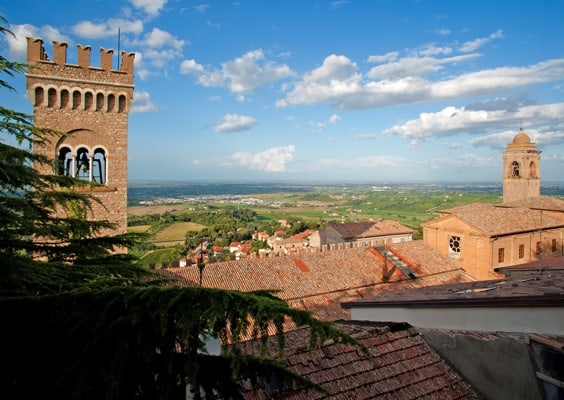
Well-known as “the Balcony of Romagna”, Bertinoro’s foundations rest on gentle limestone-organogenic hills between 100 and 250 meters above sea level. They are a pedological peculiarity of terrains with a tufaceous-clayey matrix, rich in marine fossils and unquestionably calcareous. These soils produce red wines of considerable richness, good tannic thickness and exceptional flavor.
Viticulture is concentrated mainly in the northern part of the district, an area that can be divided into 2 different nuclei: the eastern side more open to the Adriatic breezes and lower in altitude, and the western side where the reduced influence of the sea is compensated by a more generous altitude.
Cesena
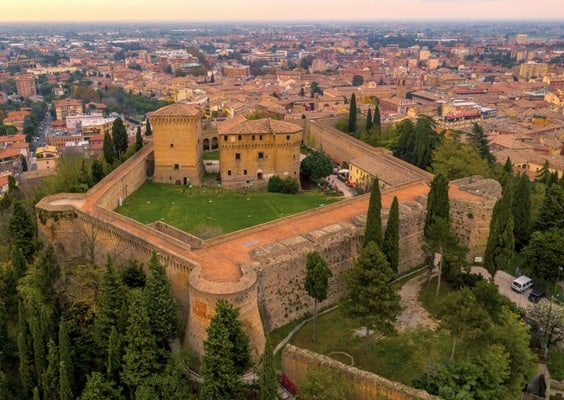
Cesena’s viticulture is gaining ground and a fair amount of credibility among professionals thanks to a good number of young passionate winemakers. It has 2 distinct segments. The first, in the north, purely foothills and quite clayey, produces simple Sangiovese wines, fruity and a pleasure to drink even in the hottest and driest years. The second, develops in the “historical triangle” of Cesena’s viticulture, between Saiano, Carpineta and Sorrivoli. The altitudes vary between 100 and 250 meters above sea level and the soils have a more arenaceous matrix, as well as a greater share of limestone.
Consequently, the wines are appreciated for their warmth, savory softness and mixture of fruit, giving them the flavour of hot cherry.
Mercato Saraceno

San Vicinio is the largest DOC sub-area yet one with the least amount of vineyards. With the exception of a few scattered vineyards cultivated in the north, the rest of the viticulture develops around the town of Mercato Saraceno, especially along the hilly ridge to the left of the Savio River.
Nevertheless, it has particularities that make it “one of a kind”. The soil structure mixes sands, gravels and clays. Sunlight, heat, winds and rainfall are very particular because of the proximity with the Apennines. The vineyards develop essentially along the river banks of the Savio River and produce a Sangiovese that surrenders a part of its fruity sweetness in favour of a greater tannic strength and a more evident acidic freshness. The Mercato Saraceno sub-area can be specified for the Famoso and Famoso Spumante types.
Longiano

The Rubicone valley has hills that look like huge terraces overlooking the sea. The viticulture area has altitudes between 100 and 300 meters above sea level and is divided into 3 different ridges. The first runs from the town of Montiano to the hamlet of Monteleone. It has less clayey and more arenaceous soils which produce a Sangiovese of distinct finesse and minerality. The second, running between the towns of Longiano and Roncofreddo, has a prevalent clayey matrix and produces wines with a more evident fruity profile and a wrinklier tannin, thus retaining a good dose of warmth. The third is located between the towns of Savignano sul Rubicone and Borghi.
The valley here is partially flooded, so the Sangiovese wines have a simpler and more drinkable character, while the hilly part is rich in clay so the Sangiovese wines are more robust and less nuanced, ripe and dark in fruit, rich and rough on the palate.
The Longiano sub-area can be specified for the Bianco type (Trebbiano: minimum 60%; Albana and Chardonnay in purity or blend, up to a maximum of 40 %).
Imola

A vast sub-zone along the Via Aemilia, between the cities of Imola and Bologna. Viticulture is mainly concentrated at medium altitudes, but the sub-zone also includes the territories of the Apennines.
Predominant soils: red and dark soils near the Via Aemilia, gray clays at intermediate altitudes, ocher in the higher areas.
Altitude: 60-400m asl.
At the end of the 1700s, Sangiovese was already a characteristic element of Imola. Later, a study conducted in 1880 identified Sangiovese as one of the most common varieties, second only to Albana. An agricultural census in 2010 registered a total vineyard area of 3,932 hectares in the province of Bologna, of which 1,039 hectares (26%) are cultivated with Sangiovese. 70% of the aforementioned area is situated south of the Via Aemilia, proving that the territory of Imola abounds with high-quality Sangiovese.
Coriano
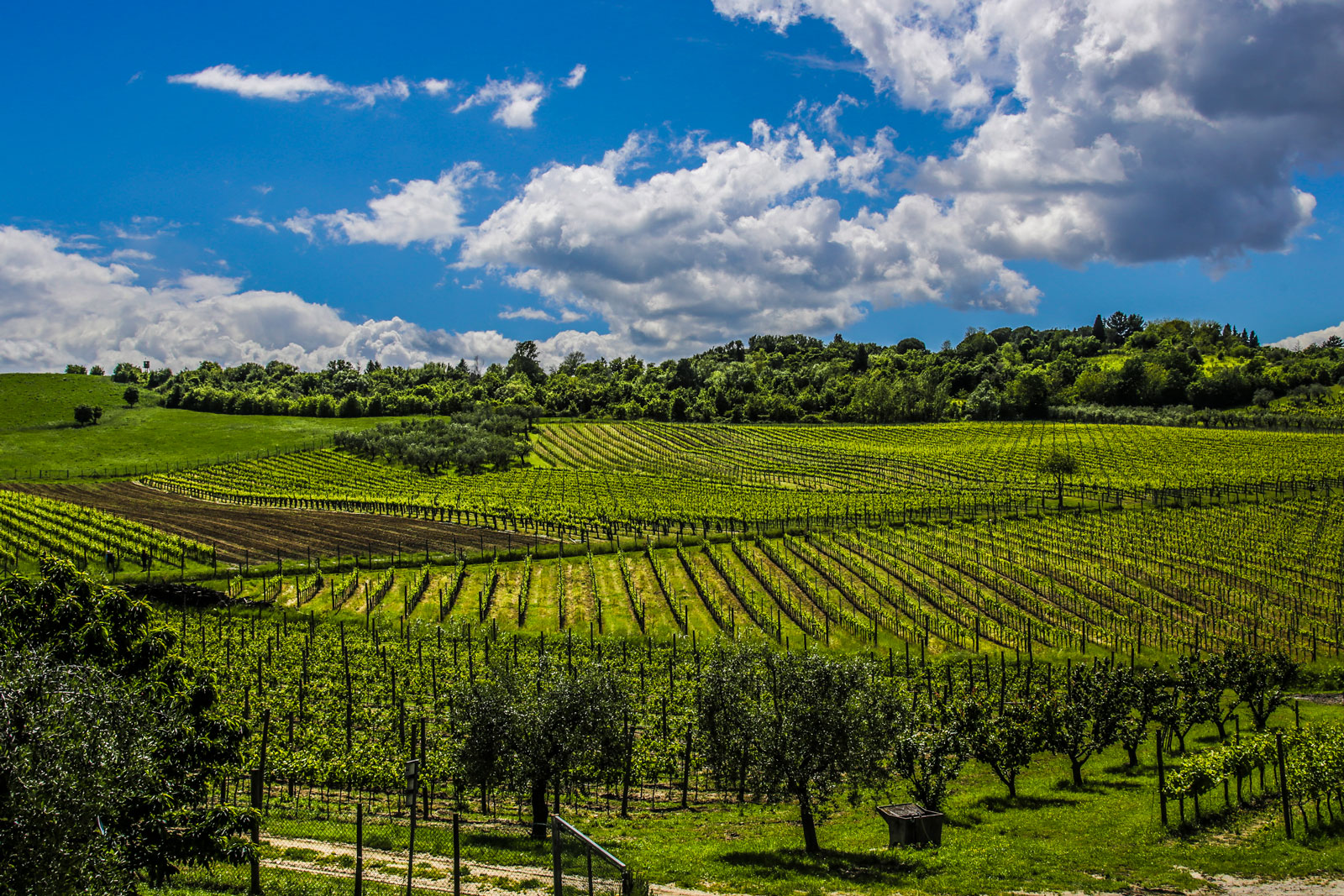
Sangiovese has been intensely cultivated in the area of Rimini up until 1860 but was then abandoned because not deemed to have enough alcohol content. It was later cultivated once again after noticing that the different growing degree units found in the valleys that reach the coast, as well as the various kinds of soils, characterize the wines in a particular manner.
The Coriano sub-zone aims to characterize and promote an area located behind the sea. Stretching along the valley of the Marano River, it is the central sub-zone of Rimini and where viticulture is mostly concentrated.
Thanks to its gray clays and good exposure, the resulting Sangiovese wines are more structured and have greater potential for aging.
Altitude: 60-250m asl.
Predominant soils: dark, ocher and gray soils.
San Clemente
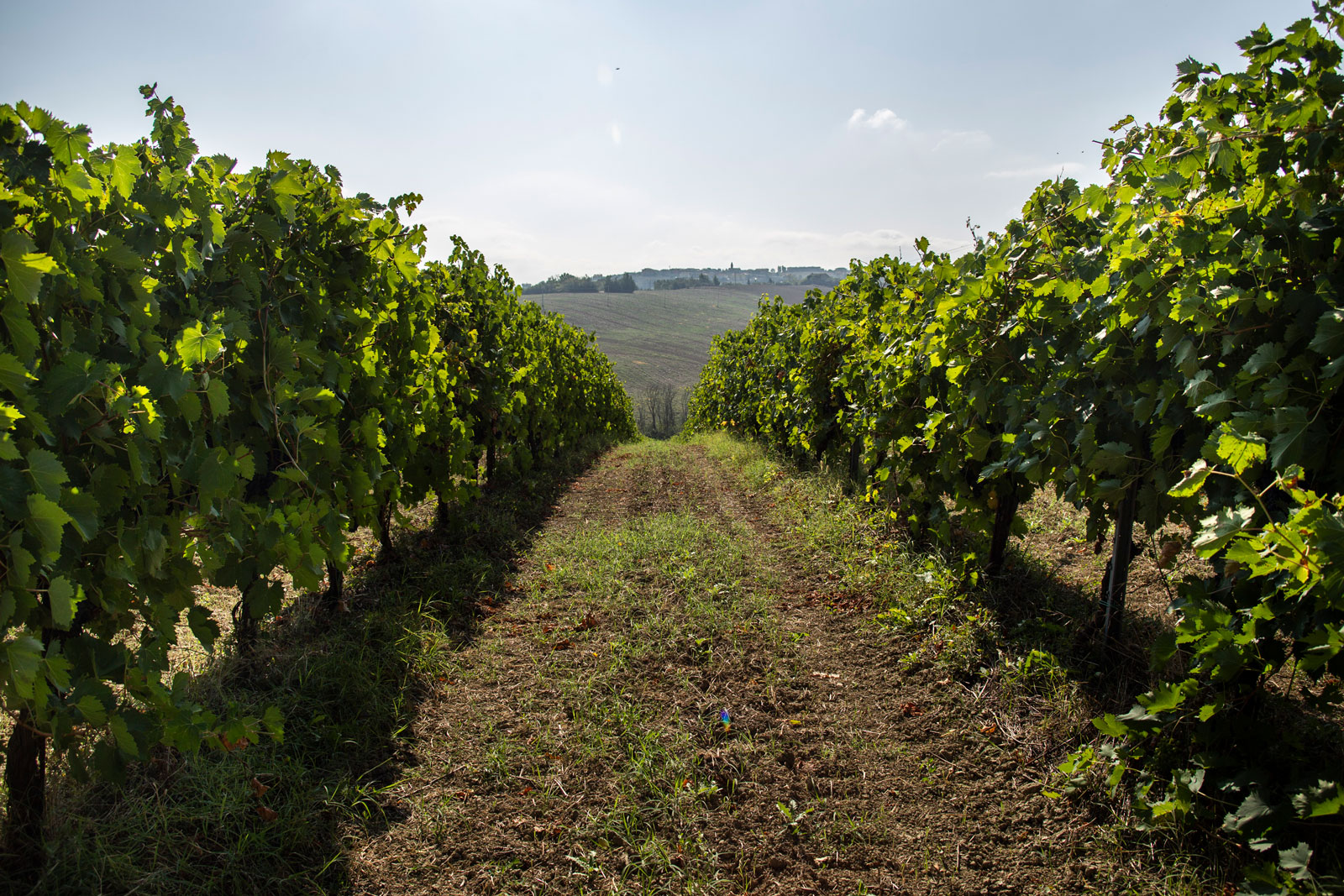
The San Clemente aims to characterize the hottest area of Rimini, with its gypsum and more colorful clays, presenting well-composed wines endowed with great acidity. Stretching along the valley of the Conca River, this is Romagna’s easternmost sub-zone.
Altitude: 60-300m asl.
Predominant soils: dark and red soils, chalky marls near Gemmano, calcareous marls at higher altitudes.
Verucchio

It stretches along the valley of the Marecchia River, from the Via Aemilia to the Apennines. Viticulture is mainly concentrated around the towns of Verucchio and Torriana; some of the most notable villages are Santarcangelo and Novafeltria.
Altitude: 50-450m asl.
Predominant soils: dark soil in the lowest area, chalky marls and gray soils at the highest altitudes.
Verucchio, located on the slopes of the Valmarecchia hills, yields highly drinkable wines.



